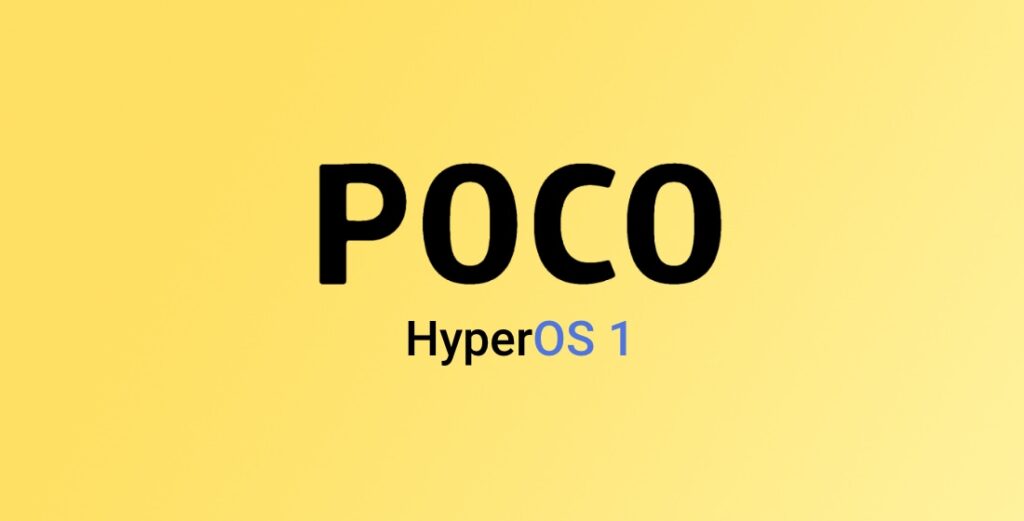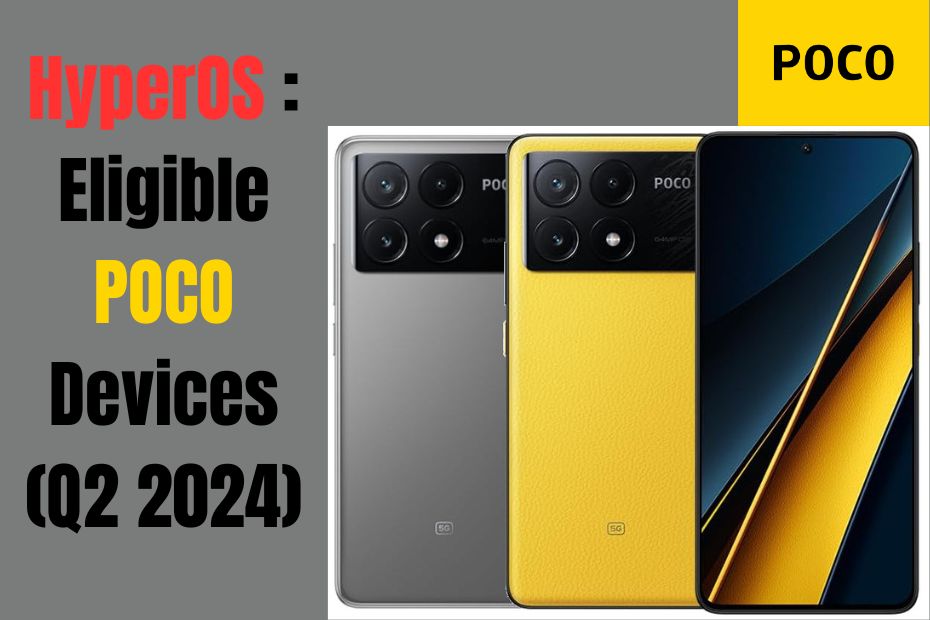Xiaomi HyperOS-eligible POCO devices (Q2 2024).
The smartphone industry is always evolving, with manufacturers striving to provide innovative features and a seamless user experience. Xiaomi’s recent announcement about its new user interface, HyperOS, has created a buzz in the tech community. Poco, known for offering high-performance devices at competitive prices, has also decided to embrace HyperOS. This article delves into the Poco devices slated for the HyperOS update in Q2 of 2024, exploring the potential benefits and what users can anticipate from this transition.
The Rise of HyperOS: A New Chapter for Xiaomi and Poco.
Xiaomi has long relied on MIUI, but the company aims to streamline its software experience with HyperOS. This new interface promises enhanced performance, customization, and user-friendliness. Here’s what Poco users might expect:
Enhanced Performance: HyperOS focuses on optimization, offering faster app loading times, smoother animations, and improved resource management for potentially better battery life. Refined User Interface: Anticipate a revamped design with cleaner menus and intuitive functionalities, providing a more organized and user-friendly experience. Customizable Features: HyperOS could introduce the ability to personalize the interface with custom themes, icon packs, and notification settings, enhancing user experience. Improved Interconnectivity: HyperOS may feature seamless connectivity with other Xiaomi and Redmi devices, facilitating easier data transfer and collaboration. While these benefits are based on leaks and announcements, specific HyperOS features for Poco devices will be disclosed closer to the rollout date.

Poco Devices Receiving the HyperOS Update in Q2 2024.
Here’s a breakdown of the Poco devices set to receive the HyperOS update in Q2 of 2024:
Poco F4: This flagship phone offers a powerful processor, high-refresh-rate display, and versatile camera system. HyperOS could further enhance its performance and user experience.
Poco M4 Pro: Known for its impressive battery life and capable camera, the M4 Pro could see optimized performance and new features with the HyperOS update.
Poco C65: This budget-friendly device delivers excellent value. HyperOS might provide a smoother user experience and improved battery optimization.
Poco M6: Offering a balanced mix of performance and affordability, the M6 could receive enhancements through the HyperOS update.
Poco X6 Neo: With a powerful processor and sleek design, the recently launched X6 Neo could benefit from improved performance and a refreshed interface with HyperOS. Other Poco Devices
Currently, there’s no information about older Poco devices like the Poco F3, X3 series, or M3 series receiving the HyperOS update in Q2 2024. Xiaomi might release a roadmap for these devices later. Users should monitor official Poco channels for updates.
The Transition to HyperOS: What to Expect.
The rollout of HyperOS for Poco devices will likely occur in phases. Users can anticipate receiving update notifications over the air (OTA). The update process may involve data backup and possibly longer charging times during installation.
Considerations:
Potential Bugs: As with any major update, minor bugs or compatibility issues may arise initially, but Poco is expected to address these through patches.
Learning Curve: Adapting to a new interface may require some familiarization, but HyperOS aims to maintain a user-friendly approach. The Future of Poco with HyperOS
The integration of HyperOS represents a significant change for Poco devices. By leveraging Xiaomi’s resources and the benefits of HyperOS, Poco users can expect a more optimized, feature-rich, and user-friendly interface. This move reinforces Poco’s commitment to providing value and keeping devices updated.
As more information becomes available about HyperOS, users can make informed decisions about updating their devices. One thing is certain: the adoption of HyperOS marks an exciting new chapter for Poco and its dedication to delivering a superior user experience.
